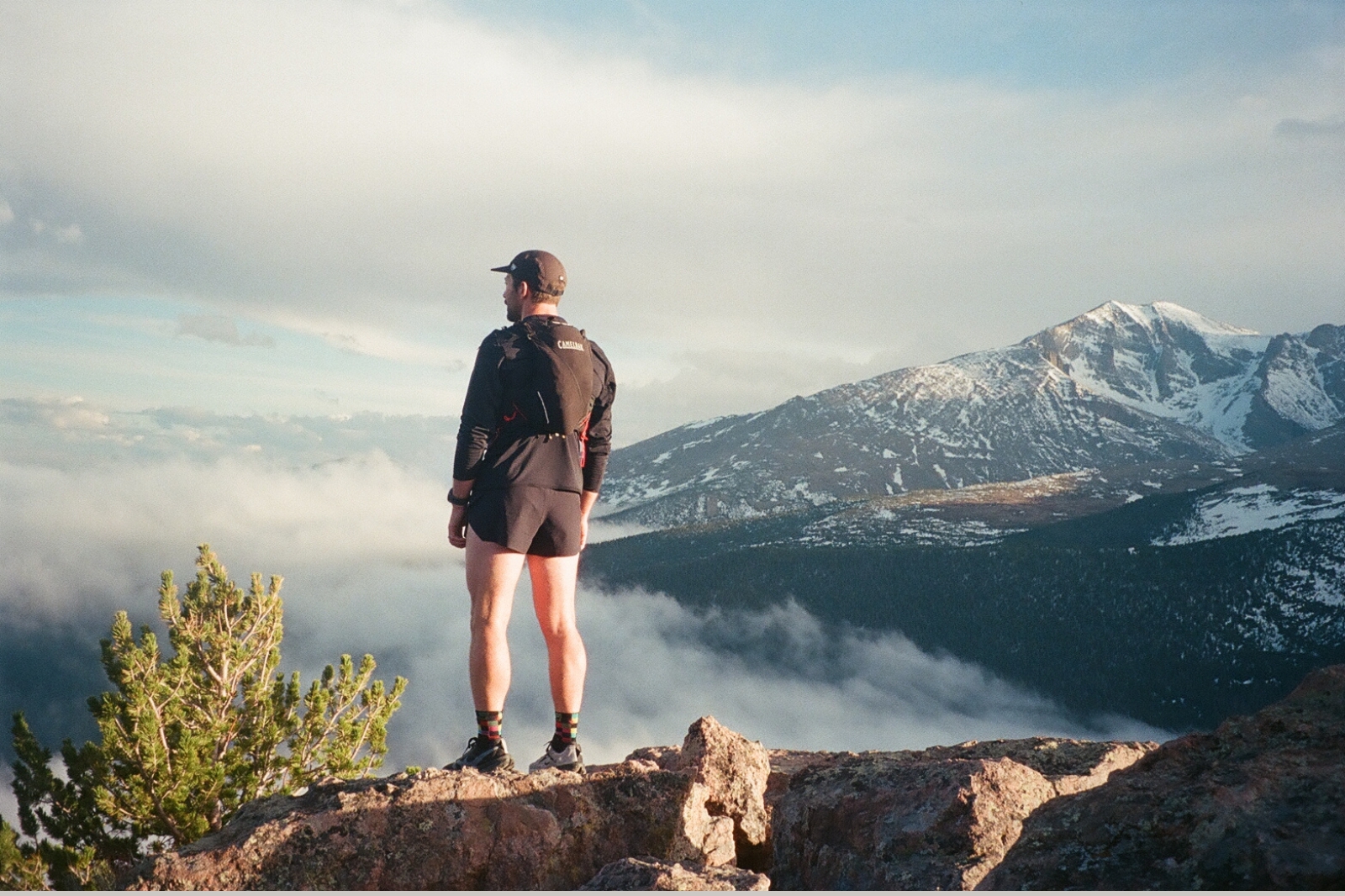
We independently review everything we recommend. When you buy through our links, we may earn a commission.
Dirt Division leader Taylor Bodin takes on the Leadville 100
DNF
Working through what it means to not finish on a day you thought you would

Before I lined up at the start line for the Leadville 100, my daughters had never seen me cry. Not at home, not on race day, not for birthdays or holidays or funerals. My youngest wanted to know what I sounded like when I cried, while the oldest– as a caring big sister– simply wants me to know it’s okay to do so.
I’m just not really a crier, I guess. It hasn’t always been that way; after all, I’m the youngest of three latchkey kids raised in the hands-off environ of the ‘90s. I spent most of my youth in tears under the tyranny of my older siblings.
Nevertheless, before I attempted to run 100 miles through the trails and mountains south of Leadville, it had been years since my eyes watered on account of emotion.
All that would change in the course of 12 hours.
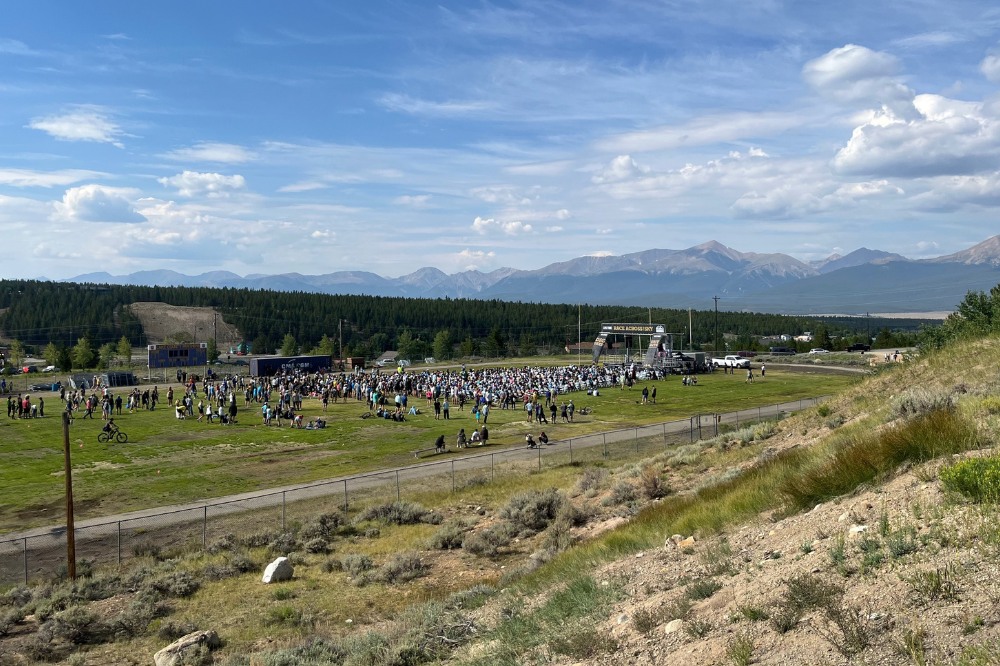
Pre-race meeting in Leadville
Setting the stage for my day at the Leadville 100 is hard to put into words. There are many layers to an athlete’s experience as they prepare for something so monumental.
This summer was the best training I have had since I started taking my trail running more seriously. The miles and memories were top notch. Mornings spent on my favorite trails through the Rocky Mountain range just out my backdoor. The snowmelt giving way to wildflowers, the solace of seeing nobody and nothing for miles and miles, save for the occasional elk or moose. All of it combined to give me the most fitness and confidence I’ve ever had for race day. Inside of me, the desire to accomplish something big.
If you’ve ever trained for a hard effort, whether a marathon or a hundred miler, you know this feeling. All athletes have felt this before. The slow and consistent stacking that gives you a mountaintop to look out from.
Point being: I was ready.
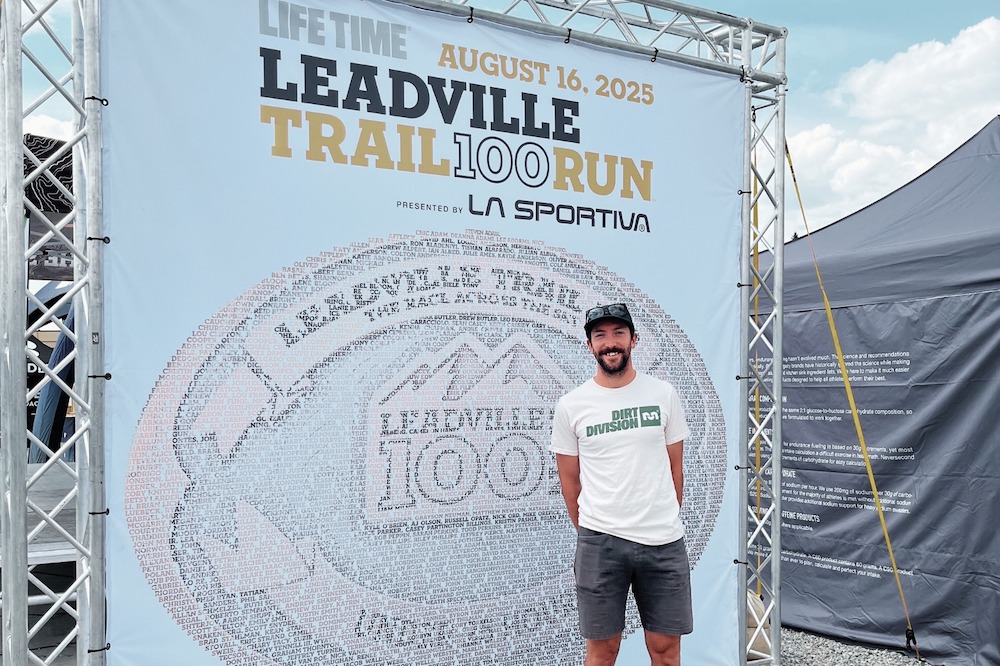
Sleep came easy the night before, a rarity for race day. My 2:30 am alarm went off and I was awake and ready. Breakfast, coffee, and a shower were all part of the routine, as if I were getting ready for a day of work or a road trip. Really, running 100 miles is pretty much a merger of those two things.
As with any race, despite the 4:00 am start, there was a palpable buzz on the streets of this tiny mining town, the highest one in America at over 10,000 feet above sea level. With nearly 800 runners and their crews, there were literally thousands of folks packing the dark streets of Leadville waiting for the double-barrelled shotgun to shoot its blank.
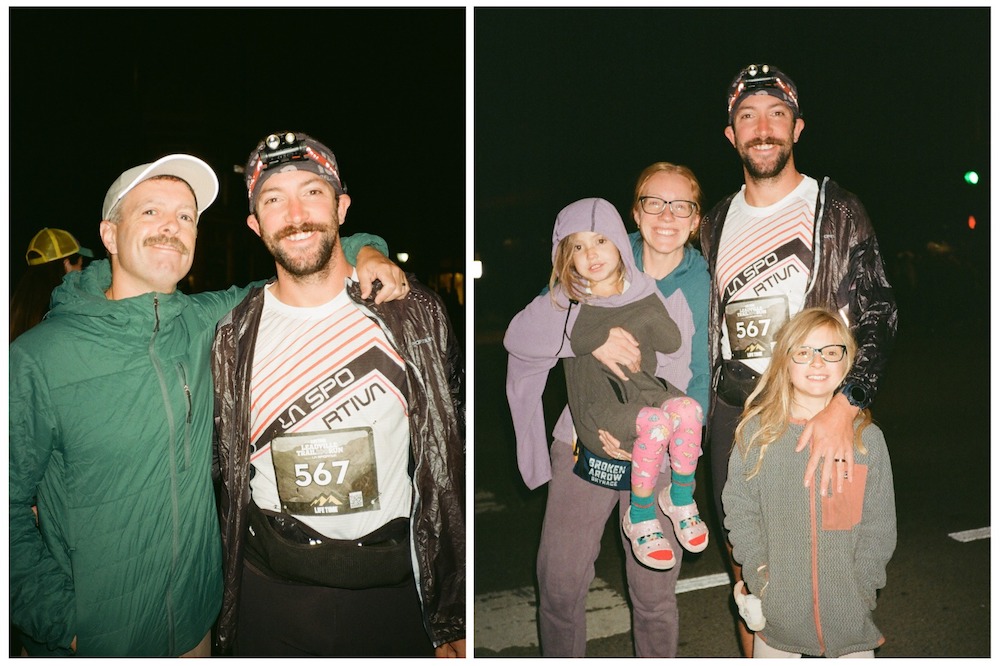
Friends and family at the start
Headlamps littered 6th street like a parade of lights. Even though I fully knew my lofty goal of a sub-20 hour finish would historically put me in the top 10, I chose to line up around 100 people behind those who were toeing the actual start line.
Boom!
With past champions, course record holders, and other elites looking to make their name here for the first time, this gate blew open from the gun. This course begins with a handful of road/gravel miles at slightly downhill grade. I was calm and collected and still clocked a 7:22 first mile. I acknowledged the excitement and pulled back the reins even more. Settle down and settle in, buddy.
The first couple of hours were pitch black. Stars shone above, almost as bright as the ever-stretching line of headlamps stringing out along the shores of Turquoise Lake towards the first aid station. The first real climb laid in silence at the opposite end of the reservoir.
My heart rate and perceived effort were in check. Miles were still tallying at a faster rate than I planned for. I’ve been on almost every step of this course and knew how “runnable” the first and last third of the race are. For time goals, these are the areas on the Leadville 100 course on which you capitalize.

My race day shoe, the La Sportiva Prodigio Pro
After 23 miles, the first crewed aid station lay in a wide open field. A tunnel of people formed through the grass and spilled out onto the road to meet incoming runners. Even though I was still feeling great, the boost of energy from family and friends made the pit stop extra special.
Most of my family came out for this odd occasion to support me, from as far as Minnesota and Iowa. They’re all used to it after a decade worth of trail races. A quick chat, trade of nutrition, swap of gear, and a few hugs and kisses were all I needed to get back out on the course in even higher spirits than before.
There were a few minutes worth of simple elation. I caught myself smiling long after being able to hear the hundreds of people cheering. This was the feeling of gratitude washing over me– for my family, my friends, this sport.
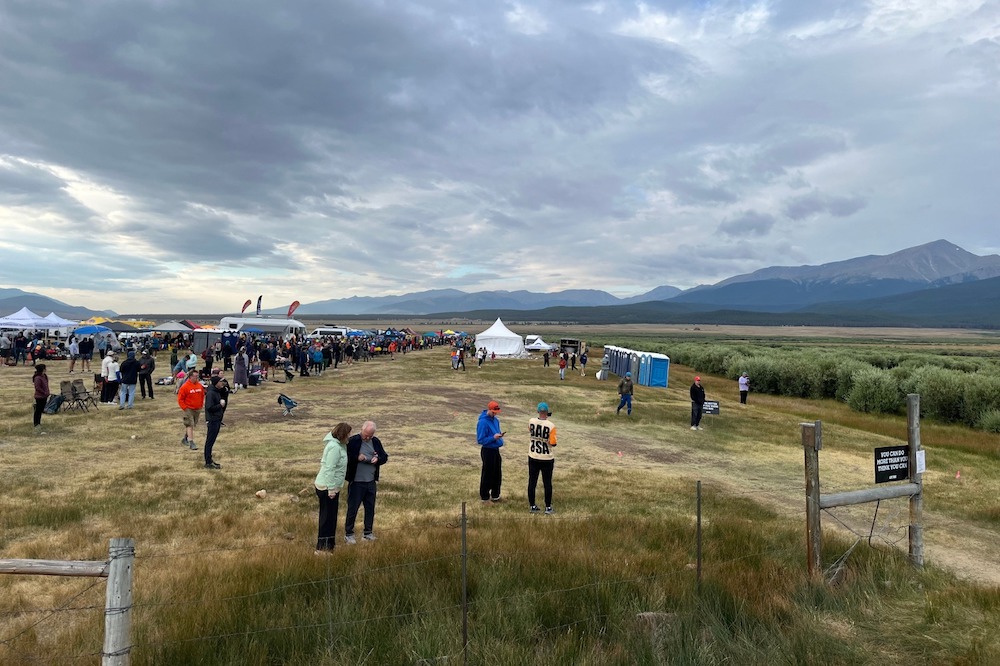
Outward Bound aid station, Mile 23
To think I had spent most of my summer enjoying training but dreading the idea of going 100 miles again. Tears started to well up in my eyes. I thought to myself: “If this is the hardest thing I have to do, go from point A to point B, doing the activity I’m most passionate about, and with the people I love most, my life is pretty amazing.”
I thought about some loved ones who struggle with mental health. Every day is hard, a mental challenge akin to running their own hundred miles. The tear faucets turned on a little more. Today was taking on more meaning beyond my own finish.
I kept moving along, only 16 miles until I could see them again. This next section felt equally as good. It contained an initial flat jaunt to the next steady climb. A short, steep drop followed and plopped runners into the Twin Lakes aid station.
Like the first long segments, I ran pretty smoothly and met up with another friend. We were basically twinning with gear and remarked how dang good the shoes felt (La Sportiva Prodigio Pro, of course) even though she was hitting a low spot with GI stuff. She eventually figured it out– Lea Mulligan, in her first 100 miler as a pro with La Sportiva, would go on to take third place at this year’s Leadville 100.
I was able to ride out my personal high until we started descending. I could feel a light pain in my foot building all day, but this is when it flipped my amygdala. There was bound to be a point where my injury would pop into my cerebral conversation, but I didn’t expect it so early and suddenly.
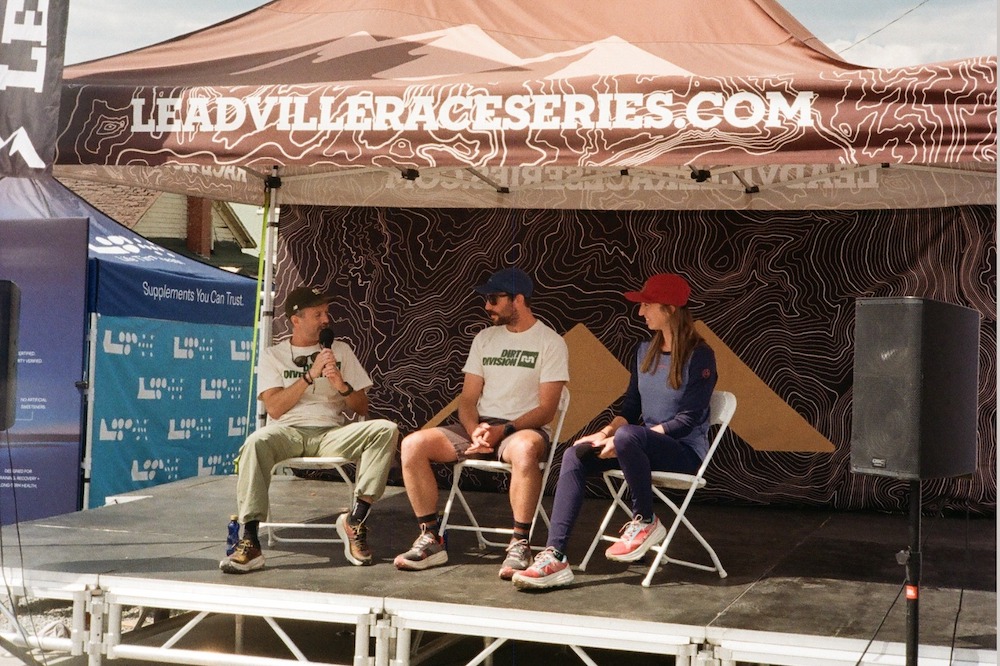
Panel discussion on Saturday with Lea Mulligan (right, 3rd place women)
Dropping into Twin Lakes was even more of a madhouse than the previous crewed aid station. In the past, it’s always been my favorite spot for spectating. It was my favorite part as a runner too. The whole aid station area was slimmed down this year (crews only, basically) to avoid too much local impact on the village of less than a hundred people. It was still the equivalent of four city blocks of encouragement.
I was met with big smiles and cheers from everyone, including my personal crew hanging out at the La Sportiva tent. I tried soaking it all up because I knew the next many-a-hours would be spent on the infamous Hope Pass before seeing my crew again. Prior to departing, I mentioned that I would prefer a different pair of shoes when I returned. The swelling in my foot became more noticeable with every step. Even so, I was optimistic that I would be back.
Poles. Pack. Nutrition. A sticker from my daughter. Let’s go!
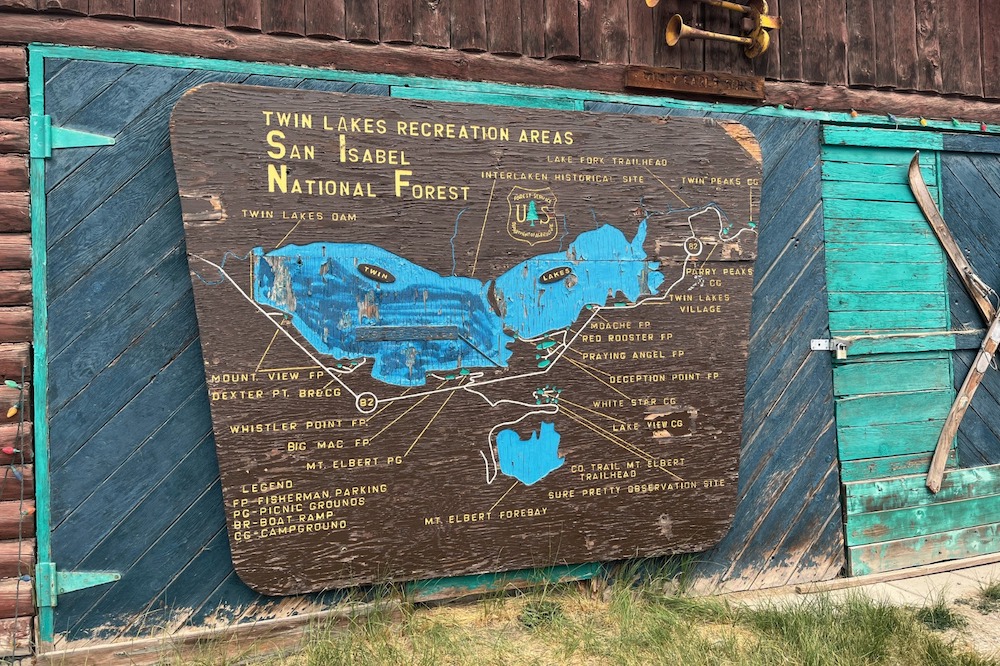
Map of Twin Lakes area
Hope Pass stares down on you as you turn to the corner on Main Street. It was actually comforting to gaze back. I was looking forward to changing up my stride from running to hiking the crap out of that climb up to 12,600 feet.
Tough, it was, but quite uneventful too. Like a churn, it was a repetitive motion. Even though there are a few “runnable” segments on the way up, I mentally planned to set the gear and hike up on this side to keep myself in check so I could return in a similar fashion.
As I crested the pass, I slowed down to take in the views and thank the volunteers who also trudged up Hope Pass to support us. I folded up my Leki poles, tucked them away, and started the charge down to the halfway point at Winfield. Within a few strides, it was apparent that something had happened in my foot. I couldn’t actually run… not even downhill! My foot had become so swollen that I couldn’t flex or extend. It was locked up and painful.
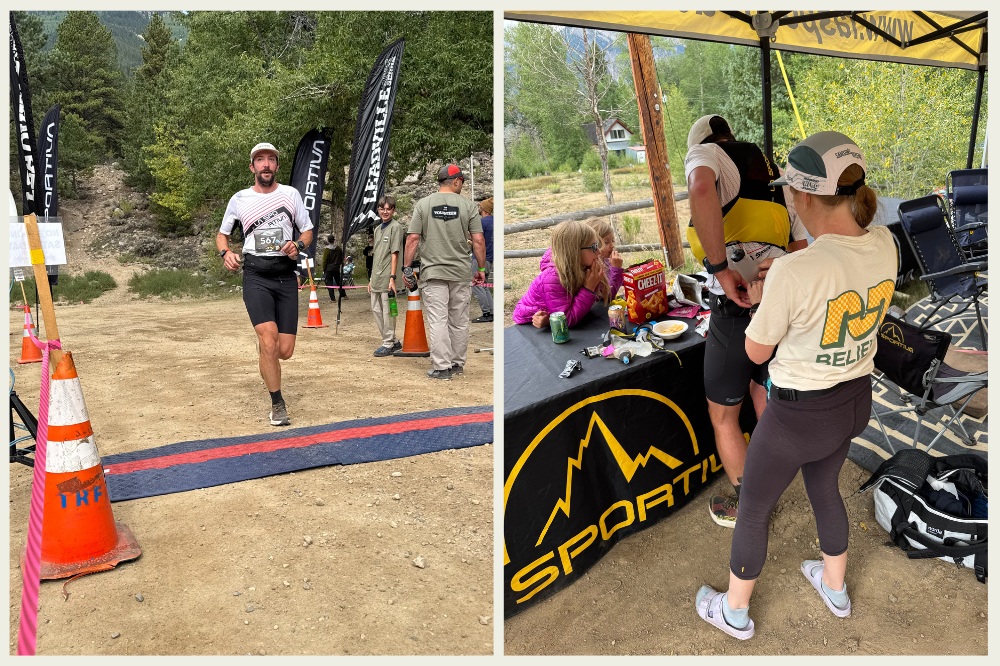
Twin Lakes timing mat (left), family crew at the La Sportiva tent
This was the part of the course where I felt I had an advantage– downhills are historically my strongest. The irony wasn’t lost on me that my biggest strength was now my chief challenge.
Okay. Time to problem solve. I knew that there were some really runnable miles towards the bottom. My aim was to move safely here and capitalize on the flatter truly runnable stuff. Eventually, I reached the bottom and tested it out. Turned out that was also a no-go. I couldn’t get my foot to mechanically operate. I couldn’t run, at all, even on flat ground. My pain tolerance and mitigation options both quickly waned.
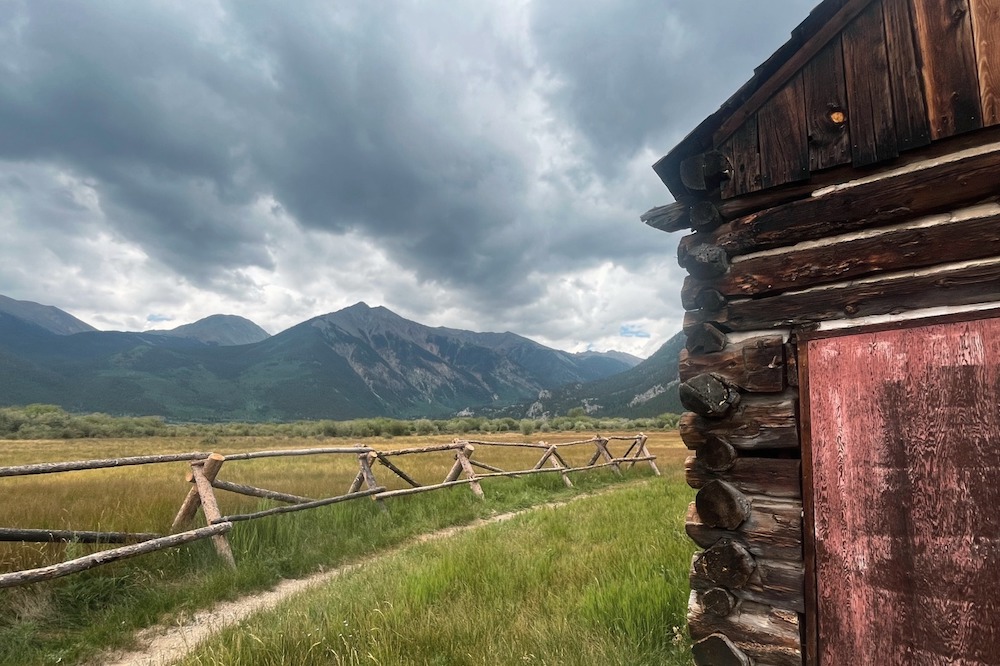
Up and over
Emotions slapped me right upside the head. I could continue and suffer back up Hope Pass, which I was mentally prepared for, but if the downhill was anything like the one I just experienced, I knew I would be putting myself at a larger risk of a long-term injury. I was only halfway through the race, after all.
That despised acronym tapped me right between the eyes for the first time: D-N-F. At this point, it was the only sensible option in this non-sensible endeavor. Every step cemented my decision to drop. The door was cracked for disappointment and shame came with it. My mind went from trying to think rationally to pondering how others would perceive my shortcomings.
I tried not to show it as I hobbled into Winfield, but the emotions with which I was wrestling must have been draped over me, as if I were physically wearing the white flag of surrender. Those volunteers were so good to me. They recognized my disappointment and did everything they could to get me back out there, but my mind was already made up.
I would listen to my body this time.
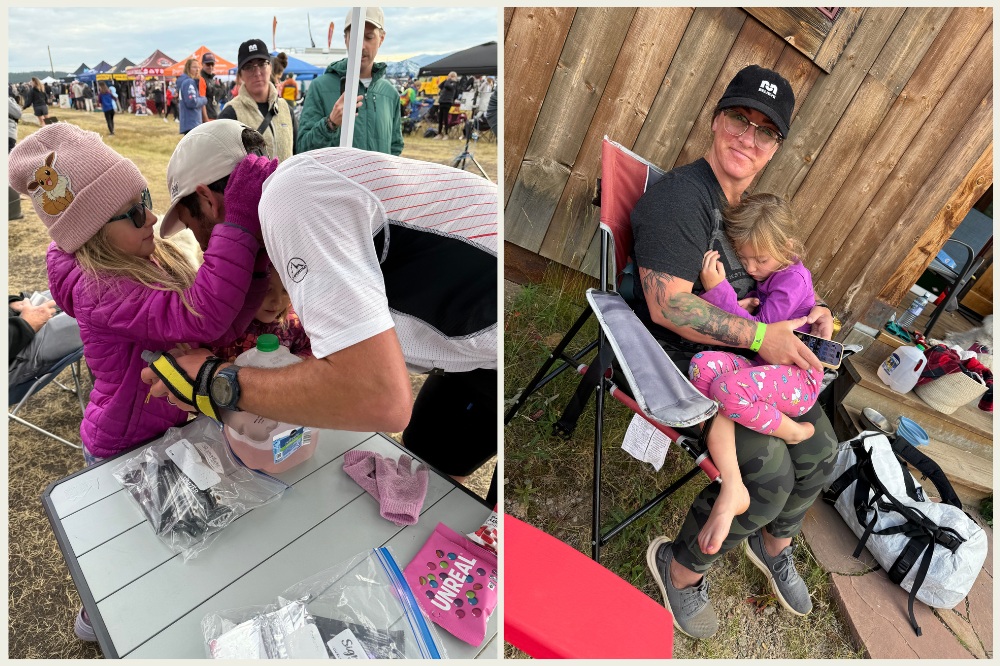
Family support
Sitting in the medical tent must be an emotional safe zone, because that’s where the tears really started for me. Part of it was accepting the facts about the day. Another piece was the emotional wrestling match as a result of my own ignorance.
There was even a point at which I dwelled on the chagrin of my crew who would surely be disappointed in me for not finishing. Their resources were wasted on my ridiculous goal. If I can’t finish a point-to-point assignment, what kind of example am I setting?
This was shame, again, trying to nudge its way into a place it doesn’t belong.
Of course my crew would be disappointed.
They would be disappointed for me.
As I started crying, the volunteers stood by with understanding. I kept apologizing for my overflow, but they encouraged me that it was okay. That’s what I needed to remind myself that my crew would meet me with the same understanding. Why would I think otherwise? Even in the midst of disappointment, everything would be okay.
Yes, it would.
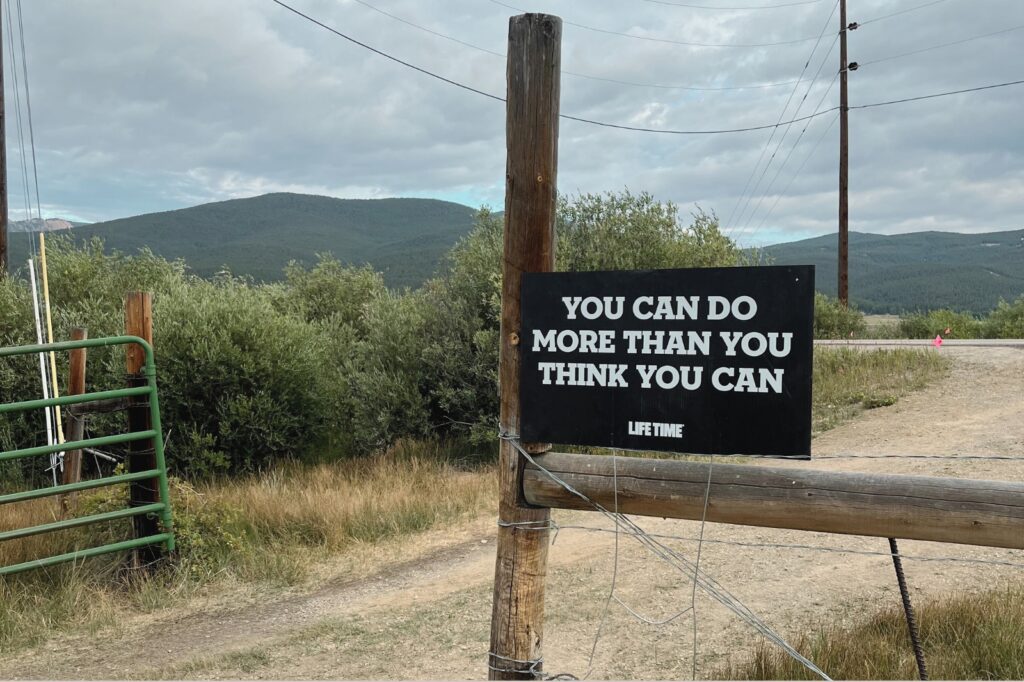
The drive out from Winfield was a long and bumpy one. My wife was waiting for me at the end of the gravel road to drive me back to Leadville. Seeing her made my eyeballs gush again, but her hug let me know that even when big things don’t go as planned, the same love and support was still there, a harbor in the storm.
It was reinforced with mom’s hug. Even more from my sisters. Again, with my in-laws. And especially by my daughters who only wanted to cuddle despite my salty and sweaty body.
DNF– Did Not Finish. The three loneliest words of the long distance runner. I have always thought of the phrase in black and white terms; much like starting and finishing, DNF was an alternate outcome, a different path in a choose-your-own-adventure novel. That’s it. Detach the emotion. Even for athletes I have coached who DNF-ed (yes, it’s a verb now), I tried to be matter-of-fact about the scenario. Which is silly, because I’m naturally quite empathetic. We all have emotions and empathy, whether we show it or not. Otherwise why would we pour our hearts and souls into this sport?
These massive physical feats have a side of individual investment. You’re the one out there doing the work, setting goals, building the hope of what’s to come. Even when there’s a large element of the unknown, you forge the path to that startline with hours upon hours of preparation.
Even so, most of us don’t do this alone. We have family, friends, physical therapists, coaches, etc. who all have helped us get to our personal start line. They are often the ones who take on the sacrifices with us. As with any life situation, the more people that are involved, the more complicated something becomes. There are simply more moving parts, more invested parties, and more love throughout the journey.
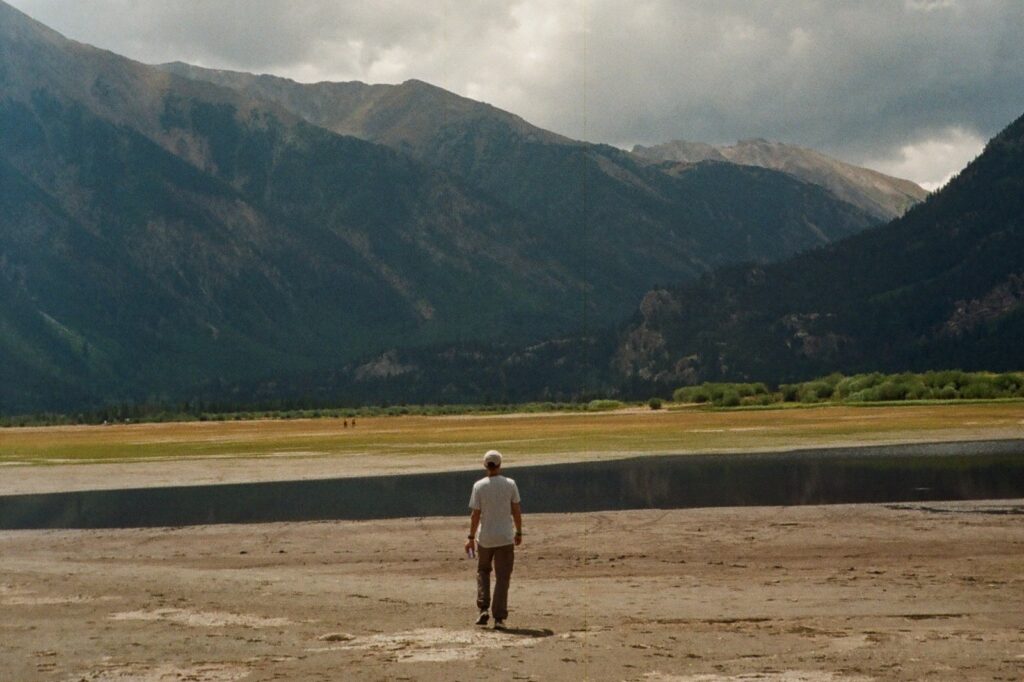
Beyond that, there’s a whole existential realm that involves our existence in a broader universe. No matter what you believe, there’s a whole inner dialogue that tends to float beyond a personal chat between your ears. In my personal life, running has happened to coincide with a spiritual journey as well. This has made the trails a “sanctuary” of sorts where my mind and soul wander and ponder beyond.
All of these matter when it comes to failure.
That F word is a real and proper teacher, but many of us need a reformation of its meaning in our lives. I cringe at toxic optimism (and that’s coming from a genuinely positive guy), knowing failure exists for a reason. I’m not trying to make anyone feel better. It’s more about giving failure a proper seat at the table.
Sadly, as many of us have grown up, shame has walked together with failure. From sports culture to work environments, when we fail, we feel shame. For ourselves, for our teammates, for our friends and family. In our minds, we let ourselves down, but more importantly– we let them down.
Moving forward, I encourage you to take failure for what it is. It’s coming up short. Not quite making it. Trying but not achieving what you set out to do. We all fail. It’s a natural occurrence in life and an inevitable result of taking huge swings at wild goals.
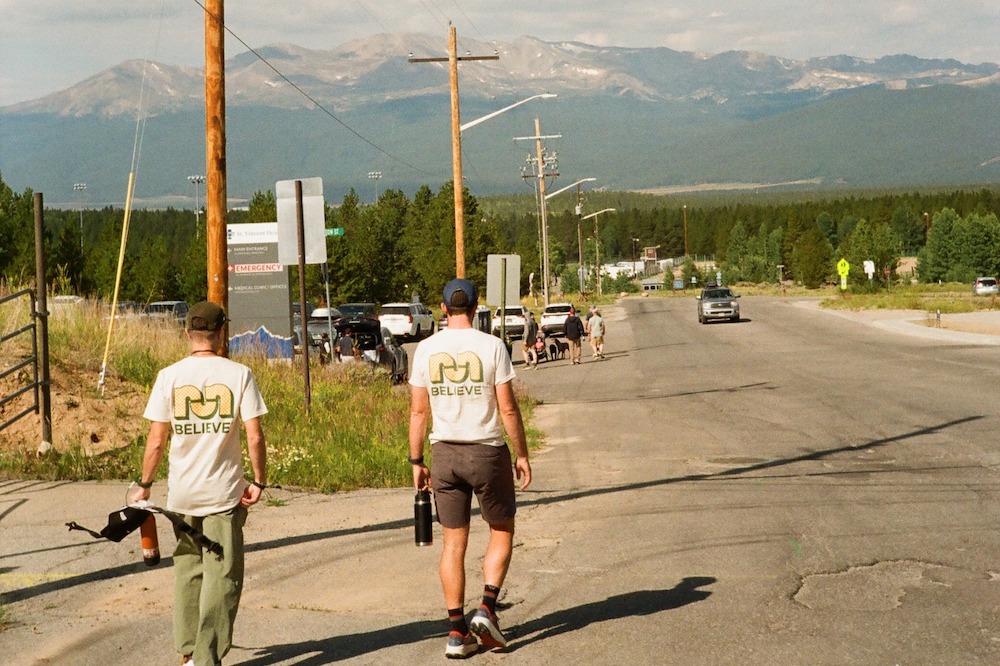
As a teacher, I used to routinely set up students for failure because there are so many opportunities for character and cognitive growth. Even kindergarteners could have productive conversations around failing. Is it always comfortable? Not usually. But it’s necessary to learn how failing is a natural thing that can assist us more than it hurts us.
Immediate emotions will always ride the wave of failures and successes, but those are fleeting. Let them go and don’t let shame mold them into an identity.
As much as this is a message to a broader audience, I’m working on this little nugget of wisdom for myself. The failure/shame complex has always been a difficult one for me as a human and athlete. My hunch is that I’m not the only one.
You may be in the midst of failure. If not, you’ll be there some day. It’s important to know that DNF-ing is not the end, it’s just the middle in your next success story.
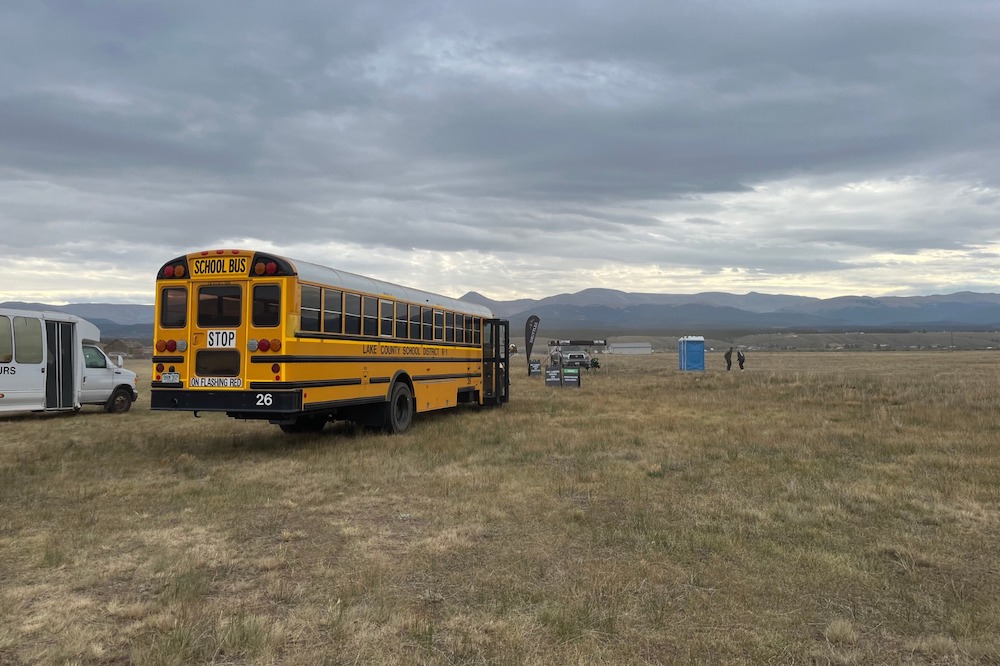
Shuttle bus at Outward Bound
It took me more than a week to finally start sorting through my things from race day. It all sat in the corner of our dining room as a constant reminder about that day in Leadville. I wouldn’t call it avoidance– I actually liked the pile, as it allowed me to process the experience over time.
Pulling the plug was a lot harder than I thought it would be. When I dropped out, I felt fantastic from a physical energy and mental perspective. My nutrition was going well, my legs felt strong. Everything was clicking, except my bum foot. In that way, the decision to DNF was so much harder than pushing through to the finish. It was bold in its own way.
Once I popped the zipper on the crew bag to sort through the rubble, I was actually enlightened. The slow processing allowed me to actually kick shame to the curb, where it belonged in the first place.
Disappointment is a part of life. So is failure. And goals aren’t a given. We don’t get to experience the highest of highs without dipping into the lowest of lows from time to time. Where I went wrong wasn’t the faster splits in the first half, the ignorance of my ongoing injury, or the tears that came over a silly race.
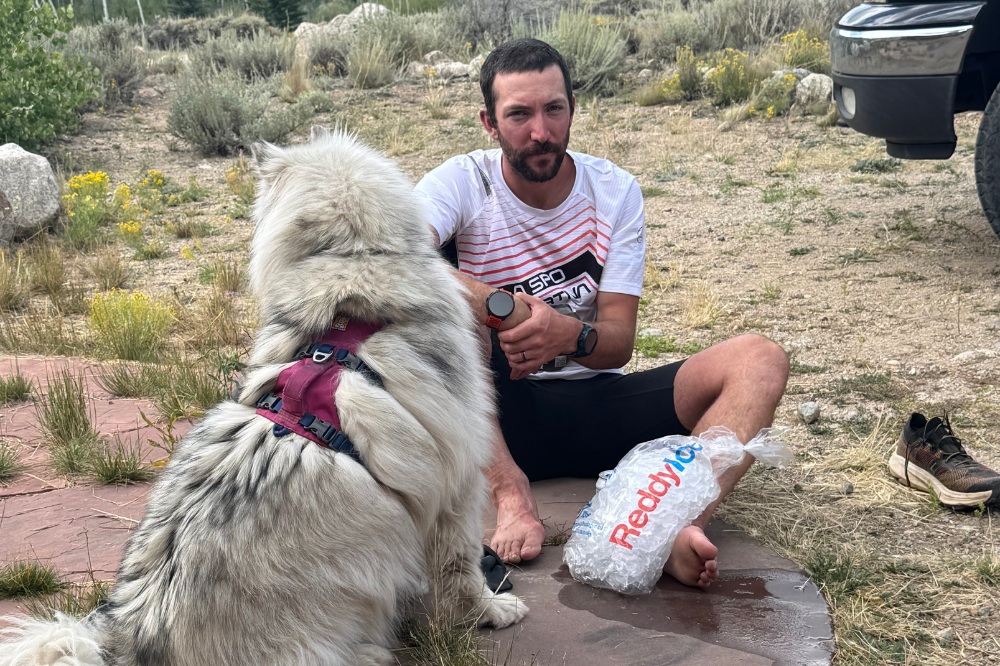
Dogs and ice help
My vital mistake was giving shame an invitation to what should have been a celebration, no matter the outcome. Shame is a thief of joy. It denies growth and it’s greedy. Shame will never serve someone well.
It would be a disservice to myself and those around me to allow shame to mold my experience, because there’s so much beauty that would be lost in the process.
Overall, the day was amazing. Truly, an incredible experience. I had some of my closest people around me as I embarked on a major goal. I spent a day on the trails. I learned a lot about myself as a runner throughout the time I did have on course. All of this was just surface level treasure, but it was still gold.
Even though failure and disappointment will always be part of my Leadville journey, shame doesn’t need to be. I can sit with failure. I can grow even in disappointment. Possibilities remain endless.
Shame would tell me I couldn’t, but love tells me I can try again.
And I will. Leadville– I’ll be back.
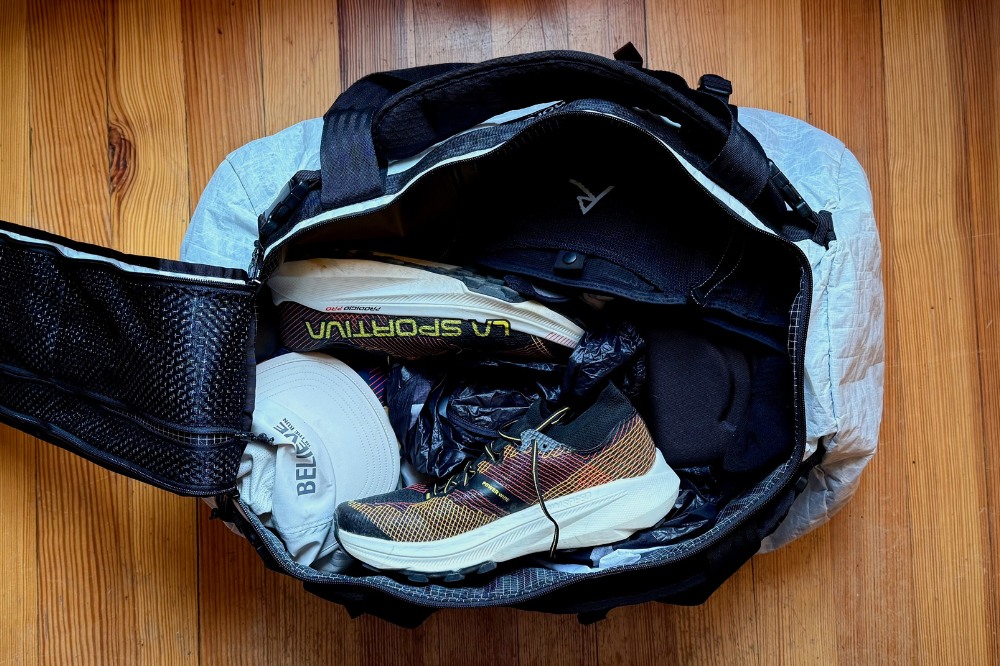
Have something to say? Leave a Comment
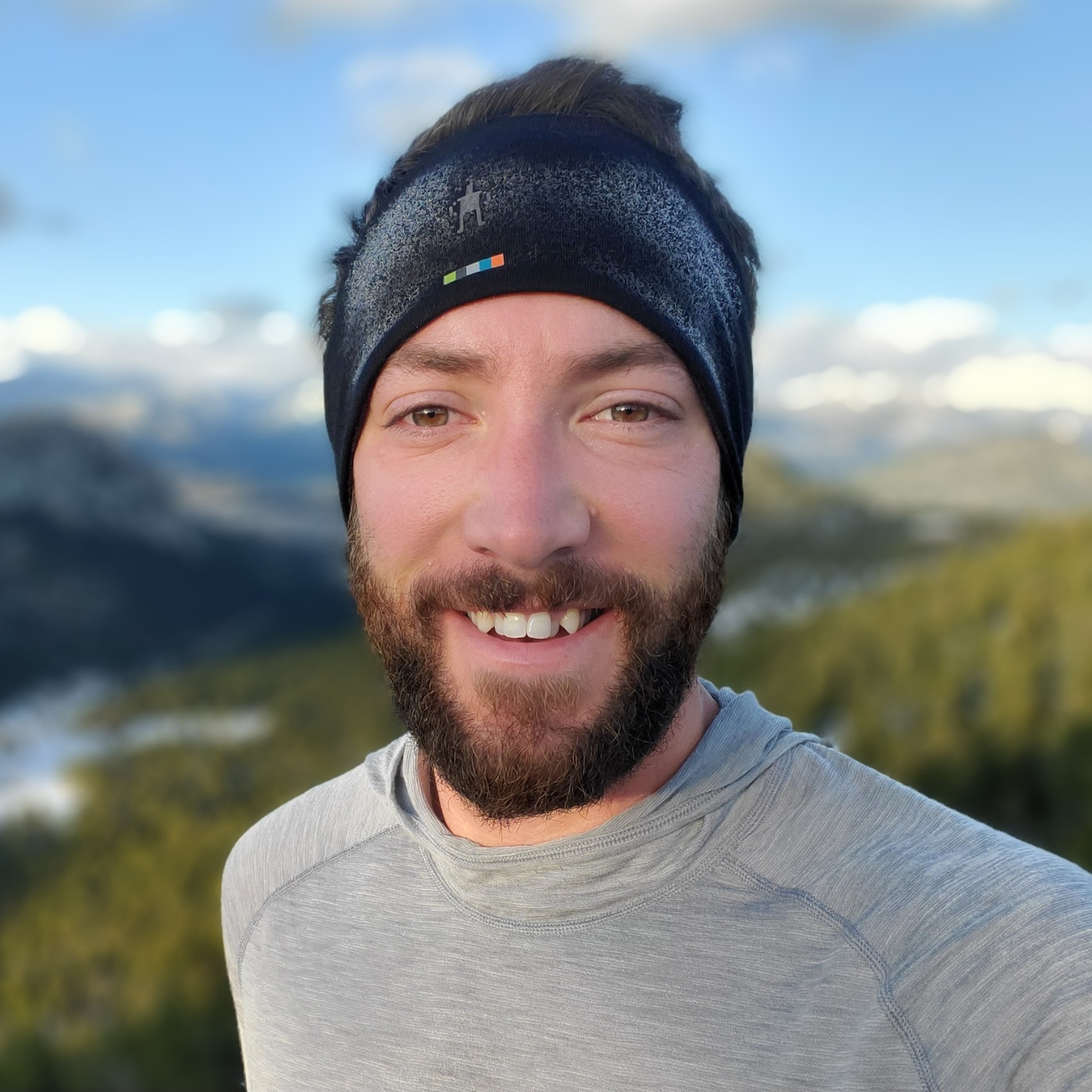
Taylor Bodin is a trail and ultra runner living in Estes Park, Colo., with his wife and daughters. As the head of the Dirt Division at Believe in the Run, trail running is pretty much the only hobby he can manage right now and loves it. Every so often, he will pop off a race or FKT attempt because competition is pure and the original motivator for him getting into running anyway.
More from Taylor
